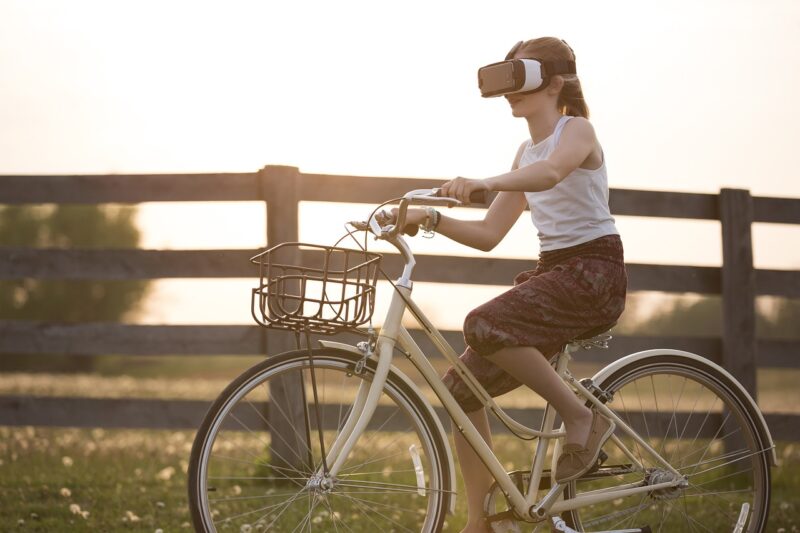How Virtual Reality Is Transforming the World of Entertainment
November 17, 2024

Virtual Reality (VR) is revolutionizing the way we experience entertainment, creating immersive environments that engage the senses and captivate the imagination. As technology advances, the applications of VR expand beyond gaming into various forms of media, from films to live events and interactive experiences. This article explores the ways in which VR is reshaping entertainment, the current state of the technology, and the future possibilities that lie ahead.
1. The Evolution of Virtual Reality
Virtual Reality has a rich history dating back to the 1960s when the first VR head-mounted display was developed by Ivan Sutherland. However, it wasn’t until the mid-2010s that advances in technology made VR accessible to the general public. The debut of affordable devices like the Oculus Rift and HTC Vive marked the beginning of a new era in entertainment. Today, VR is at the forefront of technological evolution, providing ultra-realistic experiences that were once confined to the realm of science fiction.
2. Immersive Gaming Experiences
The gaming industry has been one of the most significant beneficiaries of VR technology. Immersive VR games allow players to step into fantastical worlds, interact with characters, and solve puzzles as if they were part of the action. Popular titles such as “Beat Saber,” “Half-Life: Alyx,” and “The Walking Dead: Saints & Sinners” showcase how VR can enhance gameplay by making it more interactive and engaging.
Unlike traditional gaming, where players are limited to a screen, VR lets them physically move around and interact with their environment. This adds a thrilling layer of involvement, encouraging players to engage more deeply with the story and mechanics of the game.
3. Reimagining Film and Television
Beyond gaming, VR is redefining how audiences experience films and television. Filmmakers like Darren Aronofsky and acclaimed studios such as Oculus Story Studio are producing VR films that immerse viewers in their stories from a first-person perspective. Movies like “The Invisible Man” and “Wanderlust” provide emotional and visceral experiences that traditional film cannot match.
VR also allows for interactive storytelling, where viewers can choose their path through a story, influencing the outcome based on their decisions. This level of engagement offers a unique way to consume content and view narratives, making audiences part of the storytelling process rather than mere spectators.
4. Virtual Concerts and Live Events
The music sector is also embracing VR, presenting concerts and live events that transport fans to new realms. Bands like The Weeknd and Travis Scott have hosted virtual concerts in worlds designed for maximum engagement, allowing viewers to interact with the environment and other attendees. For instance, Travis Scott’s concert in “Fortnite” attracted over 12 million concurrent viewers, showing the power of VR to reach global audiences.
5. Advantages of Virtual Reality in Entertainment
The rise of VR in entertainment presents several advantages:
- Accessibility: VR technology offers the potential for accessibility to events and experiences that may be limited by geographical or physical constraints. Fans worldwide can attend concerts, watch films, or participate in activities without needing to be physically present.
- Unique Experiences: VR can craft experiences that wouldn’t otherwise be possible. Whether it’s exploring an ancient civilization, attending a live concert, or becoming a character in a story, VR transforms passive consumption into active participation.
- Expanded Audience Reach: For content creators, VR allows access to wider audiences, opening new revenue streams through technologies like pay-per-view virtual events and exclusive content.
6. Challenges Facing Virtual Reality Entertainment
Despite the exciting possibilities, several challenges must be addressed for the widespread adoption of VR in entertainment:
- Technical Limitations: High-quality VR experiences require powerful hardware, which can be expensive for consumers. The development of more affordable, accessible devices is key to expanding reach.
- User Experience: To ensure user satisfaction, creators need to focus on minimizing issues like motion sickness, which can detract from immersion.
- Content Creation: While gaming and film have embraced VR, a clear demand for more diverse content is necessary to attract audiences continuously. Content creators need to innovate continually to keep viewers engaged.
7. The Future of VR in Entertainment
The future of VR in entertainment is bright and full of potential. As technology evolves and becomes more affordable, we can expect to see an increase in communities centered around shared VR experiences, further blurring the lines between real and virtual worlds. Additionally, with the rise of social VR platforms, fans could interact with one another in immersive spaces, enhancing the social aspects of entertainment.
Virtual Reality also has the potential to integrate with other emerging technologies, such as augmented reality (AR) and artificial intelligence (AI), leading to even more sophisticated and personalized entertainment experiences.
Conclusion
As Virtual Reality continues to transform the entertainment landscape, it offers innovative ways to connect, experience, and engage. From revamping the way we play games to creating unique viewing experiences in film and music, VR is paving the way for a revolution in entertainment. The journey has just begun, and as technology advances, so too will our experiences, hobbies, and ultimately, our stories.







